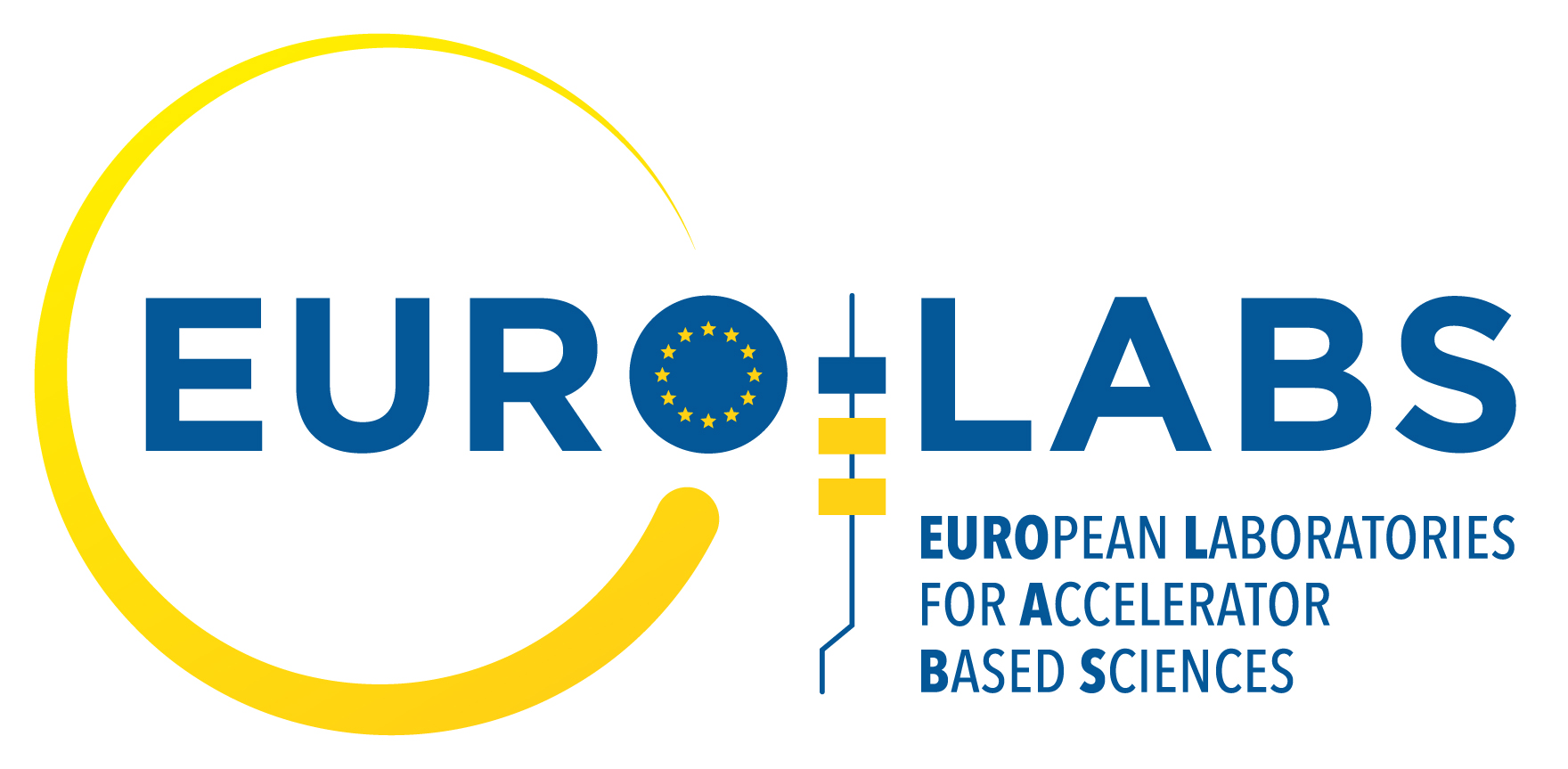DESY
DESY provides three test beam lines with 1-6 GeV/c electrons. It is a very versatile system which allows the user to individually select momentum and rates. Bremsstrahlung beam is generated by a carbon fibre in the circulating beam of the electron/positron synchrotron DESY II. Photons are converted to electron/positron pairs using a metal plate. A dipole magnet is then used to select the momentum of the test beam particle and a collimation system removes the remaining halo.
DESY II
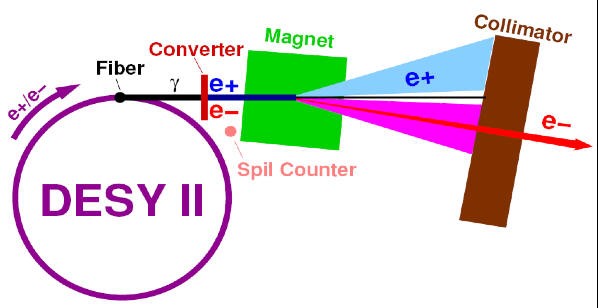
This is mainly used as the injector for PETRA III (synchrotron light source). The revolution frequency is 1 MHz, the RF frequency 500 MHz, and the bunch length around 30 ps. The average radius is 46.6 m.
For PETRA III: DESY II delivers every fourth cycle (320 ms) single bunches with 2*1010 electrons at 6 GeV (Top-Up every 3min with 1*109 electrons).
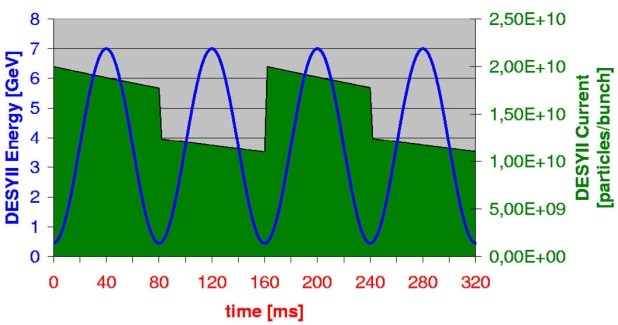
Test beam runs in PETRAIII mode with an extraction on the falling slope (at 6 GeV with reduced beam current during top-up). The falling slope is used to increase the time which is useful for test beam generation. Due to top-up of PETRA III, DESY II is running day and night. With electrons about 2*1010 particles every 80 ms should be possible (no accumulation in PIA necessary; “test beam only”-mode).
The particle rates in the test beam depends on many parameters (beam current, collimator setting, secondary target). Ideally, the maximum rate is around 10 kHz (3 GeV, 3 mm Cu convert, Collimator ca. 5 mm x 5 mm, DESY II maximum energy at 6.3 GeV).
| All three test beam lines haveInterlock systemsMagnet control to select the particle momentumPatch panels with pre-installed cablesGas warning systemFast internet connection (with DHCP)WiFi (with eduroam)Trigger scintillatorsSeparate counting rooms. | The user can ask forTranslation stagesPremixed gasesPixel Beam Telescopes:EUDET/AIDA-style Pixel Beam Telescopes Additionally we can provideSupport during installation and data takingAccess to workshops. |
Test Beam Area 21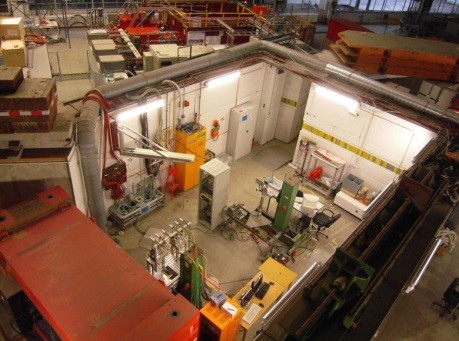 This is the beam line, where the DATURA telescope is permanently installed. It is a Pixel beam telescope from the EUDET/AIDA telescope family with six layers of Monolithic Active Pixel Sensor (MAPS) detectors and a DAQ system. The telescope has been in use since summer 2011. This is the beam line, where the DATURA telescope is permanently installed. It is a Pixel beam telescope from the EUDET/AIDA telescope family with six layers of Monolithic Active Pixel Sensor (MAPS) detectors and a DAQ system. The telescope has been in use since summer 2011. | Test Beam Area 22 This is a space for large systems. It is the location of the DURANTA Pixel Beam Telescope, as well a the EUDET/AIDA telescope, which will be permanently installed in TB22 during summer 2015. This is a space for large systems. It is the location of the DURANTA Pixel Beam Telescope, as well a the EUDET/AIDA telescope, which will be permanently installed in TB22 during summer 2015. | Test Beam Area 24/24.1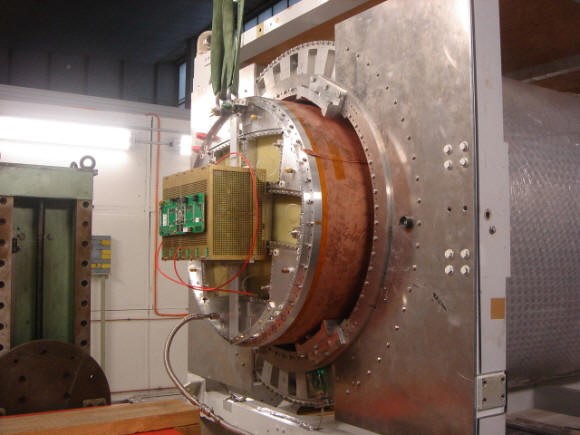 These are two areas, one behind the other, which share one beam line. Thanks to a secondary shutter, TB24/1 can be accessed, while there is beam in TB24. These are two areas, one behind the other, which share one beam line. Thanks to a secondary shutter, TB24/1 can be accessed, while there is beam in TB24. |
| In TB24.1:Large bore magnet (separate infrastructure within AIDA)1 Tesla, Ø≈85 cm, stand-alone He cooling, supplied by KEKInfrastructure (control, field mapping, etc.) through EUDET/AIDA. | In TB24:No permanent setup, also lots of spaceTests possible when PCMAG is not running. |
Reimbursement Information
The key points for reimbursement of travel and expenses at DESY are:
| The most cost-efficient means of transportation must be chosenPlease enclose all original receipts and tickets, no copies please. Include your boarding cards as well . In the case of e-tickets also attach a copy of the electronic booking confirmationExpenses will not be reimbursed later than 6 months after you finish your experiment. |
During your staying at DESY you should obtain the form “Travel Expenses Claim”, which should be filled out and sent to the TA Coordinator via mail together with all receipts and tickets in original form (this form exists only in paper form). All reimbursable original receipts/invoices/records must be attached to the travel expenses form (e.g. tickets for public transportation, train tickets, air tickets/e-tickets incl. boarding cards, etc.).
This document gives additional explanation of the reimbursement of Transnational Access projects.
The timeframe for reimbursement is usually up to 3 months.
Contact
For further technical information please contact Marcel Stanitzki or visit the website.
If you have any questions regarding the application procedure, reimbursement or eligibility please contact Natalia Potylitsina-Kube.
